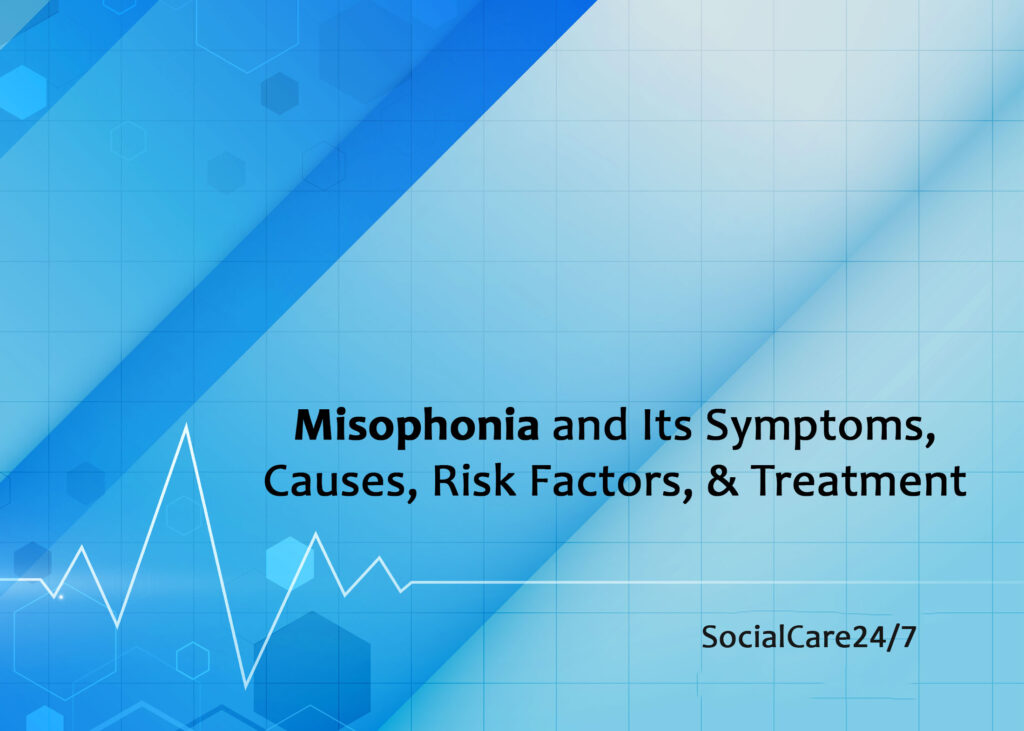Have the sounds of someone coughing, tapping, or chewing ever terrified you to death? Most individuals don’t mind these noises, but misophonia sufferers might get furious, worried, or scared. Most people with misophonia don’t comprehend their disease, which is more than an irritating sound.
Despite its everyday impact, misophonia sufferers may feel alone or disregarded. This article will discuss misophonia’s causes, symptoms, risk factors, diagnosis, therapy, and prevention.
Symptoms of Misophonia
Misophonia sufferers react emotionally to noises that others would find annoying. Many noises can trigger this syndrome, but breathing, tapping, chewing, and sucking are typical. These noises can make misophonia sufferers furious, frustrated, or afraid. If the emotional reaction feels out of control, it might cause rage or social anxiety. Varied people have varied amounts of negative feelings. Some are merely uncomfortable, while others are deeply distressed by the noises.
Misophonia can cause physical and mental pain. In risky or stressful situations, your heart rate may rise, you may sweat, or you may feel energized. People typically sense this fight-or-flight response even if others don’t mind unpleasant or frightening noises. Misophonia sufferers may avoid locations or circumstances where they know trigger noises may occur, which can isolate them and strain relationships.
Causes of Misophonia
The etiology of misophonia is unknown; however, researchers suspect brain and social components. A famous hypothesis links misophonia to a faulty relationship between the limbic brain, which governs feelings, and the auditory cortex, which interprets noises. Due to this strange brain link, some noises might evoke intense emotions. People feel furious or anxious because the brain interprets these noises as threats rather than noise.
Genetics may also be a factor. Misophonia frequently runs in families, suggesting a hereditary component. A family member is more likely to develop misophonia if a close relative does. The disease’s genes are unknown. Stressful or distressing sound situations may also cause misophonia.
Risk Factors for Misophonia
Misophonia can affect anybody, although some factors increase the risk. Previous anxiety, OCD, or PTSD sufferers may be more prone to have it again. Because they alter brain processing, these disorders make people more sensitive to sound. A PTSD patient may be sensitive to specific noises, and one that reminds them of a terrible occurrence may disturb them.
Another risk factor is the age at which misophonia initially manifests. People believe symptoms start in their teens, although they can come at any age. Early symptoms increase the likelihood of a long-term disease. As a kid or young adult, worrying or experiencing a stressful event might increase the risk of misophonia. Stress makes individuals more emotionally sensitive, which may make them more susceptible to noise.
Diagnosis of Misophonia
The DSM-5 does not recognize misophonia as a distinct disorder, making it difficult to diagnose. Doctors and nurses must depend on patient statements and office observations to diagnose the issue. Consult a misophonia-savvy doctor if you suspect it. Doctors may inquire about noises and how they impact your health and mood.
Misophonia typically requires a diagnosis. Your doctor may ask you which sounds make you react and how intensely. In addition to your symptoms, they may inquire about your overall health and any mental health issues, like anxiety or OCD, that might worsen them.
Treatment for Misophonia
This condition has no known cure, although several therapies can help patients manage their symptoms and live better lives. Cognitive behavioral therapy (CBT) is an effective treatment for misophonia. It allows patients to identify and alter negative cognitive processes that drive them to react negatively to trigger noises.
Exposure therapy (CBT) can improve misophonia patients. This strategy gradually reduces sensitivity to noises that make individuals feel terrible. Listening to these noises in a controlled environment may reduce sensitivity. This strategy can work, but it requires time and effort.
Prevention of Misophonia
It’s impossible to avoid misophonia, but you may reduce your risk or manage it. One of the best ways to prevent misophonia is to manage stress. The brains of stressed people may be more susceptible to stimuli. Mindfulness, meditation, and yoga reduce stress and sound sensitivity. A good diet and regular exercise can also minimize worry and emotional stress.
One of the best ways to avoid misophonia is to limit your contact to noises that set off it. To block noise or help the brain be distracted from stimuli causing anxiety, use headphones or earplugs or listen to white noise. Making friends, colleagues, and relatives aware of how the illness affects you helps improve the surroundings.
Conclusion
A person with misophonia may not know or comprehend their disease, yet it might affect their lives. Knowing misophonia’s symptoms, causes, risk factors, diagnosis, therapy, and prevention can help people manage its issues. There’s no cure for misophonia. However, there are effective therapies and managed symptoms.
Treatment, lifestyle adjustments, and family support can help misophonia patients cope. More research and education may help us treat and aid misophonia patients.
Source Link:
https://my.clevelandclinic.org/health/diseases/24460-misophonia



